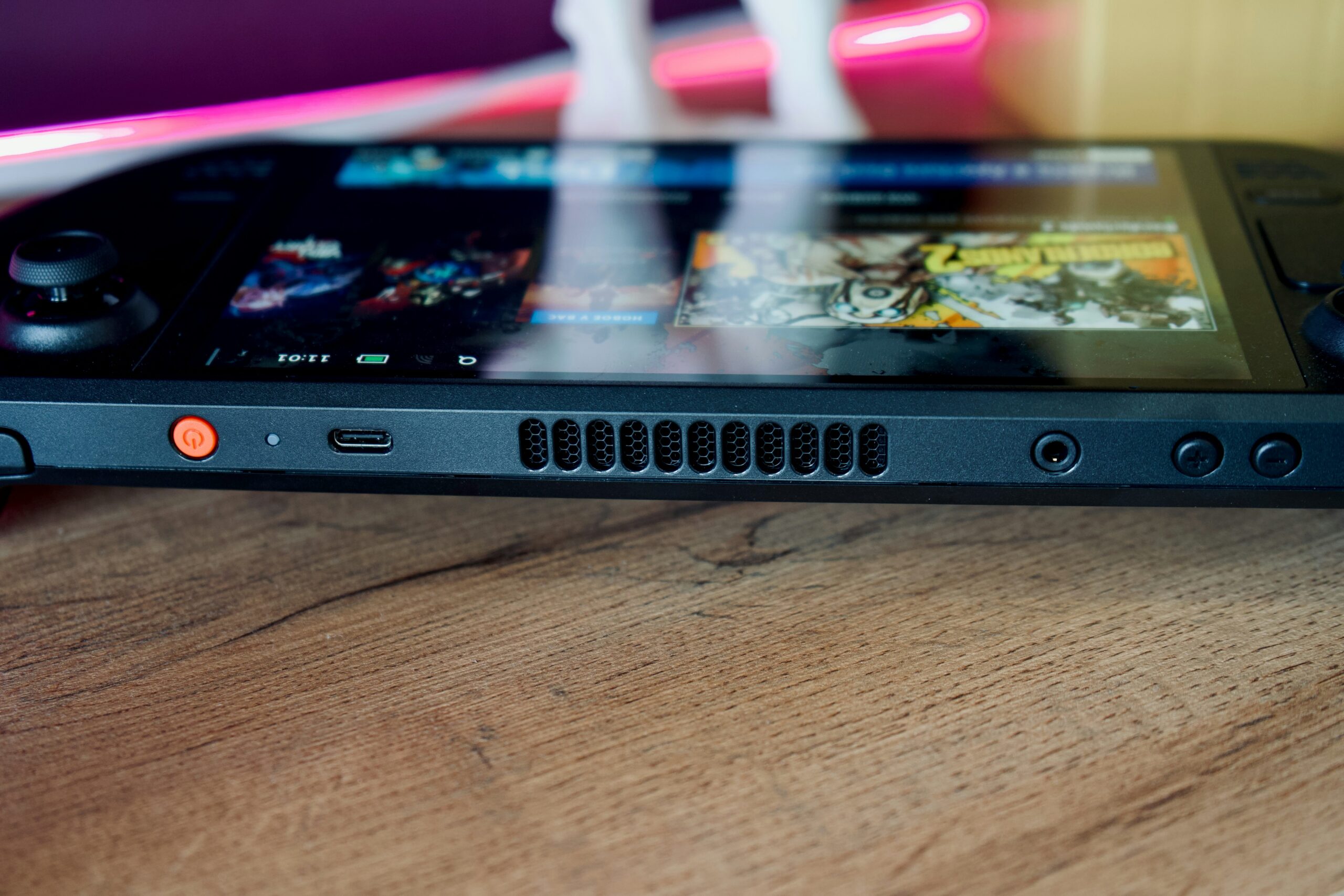No, 70 degrees Celsius is not considered hot for a GPU. It’s within a safe operating temperature range for most GPUs.
A temperature of 70 degrees Celsius (°C) for a GPU (Graphics Processing Unit) is generally considered to be within a safe and normal operating range.
While it may seem warm, modern GPUs are designed to handle higher temperatures without issues. In fact, many GPUs can safely operate at temperatures well above 70°C.
However, it’s important to note that the specific safe operating temperature for a GPU can vary depending on the manufacturer and model.
Some GPUs are designed to run cooler, while others may be optimized for higher temperatures. It’s a good practice to check the manufacturer’s specifications for your GPU to determine its safe temperature range.
To ensure your GPU doesn’t overheat, it’s also essential to maintain good airflow within your computer case, keep the GPU’s fans clean and functioning properly, and consider additional cooling solutions if you notice consistently high temperatures and performance issues.
What Is Considered a Hot GPU Temperature?

The concept of GPU temperature ranges:
The temperature of a Graphics Processing Unit (GPU) is a critical factor in its performance and longevity.
GPUs are designed to operate within specific temperature ranges, and maintaining an appropriate temperature is essential for their proper functioning.
The concept of GPU temperature ranges revolves around understanding what temperatures are considered safe and optimal for a GPU’s operation.
Idle Temperature: This is the temperature of the GPU when it’s not under load or is performing simple tasks like web browsing or document editing.
Idle temperatures are typically lower and can vary depending on the GPU model and the cooling solution in place.
Load Temperature: Load temperature is the temperature of the GPU when it’s running demanding tasks such as gaming, 3D rendering, or other graphics-intensive applications.
These temperatures are higher due to increased power consumption and heat generation.
Maximum Safe Temperature: Every GPU has a manufacturer-specified maximum safe operating temperature, often referred to as the “thermal limit” or “Tj Max.”
Typical temperature ranges for GPUs and what is considered “hot”:
Typical Temperature Ranges:
- Idle Temperature: Idle temperatures for most modern GPUs typically range from 30°C to 50°C. Nonetheless, these values may fluctuate based on the particular GPU model, its design, and the room’s ambient temperature.
- Load Temperature: Under load, GPUs can reach higher temperatures. Typical load temperatures for gaming GPUs range from 60°C to 85°C. High-end gaming GPUs might run closer to 80°C, while more budget-oriented models may run cooler.
What is Considered “Hot”:
- “Hot” for a GPU can be somewhat subjective, but generally, a GPU temperature is considered hot when it approaches or exceeds the manufacturer’s specified maximum safe temperature.
- These maximum safe temperatures can vary between GPU models, but they are usually in the range of 85°C to 90°C for most consumer graphics cards.
- It’s important to note that reaching the maximum safe temperature doesn’t necessarily mean immediate hardware damage, as modern GPUs incorporate thermal protection mechanisms that can throttle the performance to prevent overheating.
- However, sustained operation at or near the maximum safe temperature can reduce the GPU’s lifespan and lead to performance degradation over time.
In general, it’s advisable to keep your GPU’s temperature well below the maximum safe temperature for optimal performance and longevity.
Regularly cleaning the GPU and ensuring proper cooling through efficient fans and good case airflow can help maintain lower temperatures during heavy usage, which can improve overall system stability and extend the GPU’s lifespan.
Factors Affecting GPU Temperature
The factors that influence GPU temperatures:
Workload:
- Workload is a significant factor that influences GPU temperatures. The more demanding the tasks the GPU is performing, the higher the temperature it will reach.
- Graphics-intensive workloads like gaming, 3D rendering, and video editing put a substantial load on the GPU, causing it to generate more heat.
- Cryptocurrency mining, which involves continuous and intensive computational work, can also drive GPU temperatures to high levels.
Cooling Solutions:
The type and quality of cooling solutions have a direct impact on GPU temperatures:
- Air Cooling: Most consumer GPUs come with air cooling solutions, which use fans to dissipate heat. The number and size of fans, as well as the design of the heat sink, can affect cooling efficiency.
- Liquid Cooling: Liquid-cooled GPUs, using a closed-loop liquid cooling system, can provide more efficient heat dissipation. They tend to maintain lower temperatures but are often found in higher-end models.
- Custom Cooling Solutions: Some GPUs come with custom cooling designs from manufacturers that can perform better than reference designs. These may include larger heatsinks, additional fans, or unique cooling technologies.
GPU Design:
The GPU’s architecture and design can impact its temperature under load:
- TDP (Thermal Design Power): Different GPU models have varying TDP ratings, which indicate the maximum amount of heat the GPU is designed to dissipate. GPUs with higher TDP ratings tend to run hotter under load.
- Manufacturing Process: Smaller manufacturing processes, such as 7nm or 12nm, can create more power-efficient and cooler-running GPUs compared to larger processes like 28nm.
- Overclocking: Overclocking a GPU to run at higher clock speeds can significantly increase its heat output, so it’s important to monitor and manage temperatures when overclocking.
Ambient Temperature:
The room temperature or environment where the computer is located plays a role in GPU temperatures. A hotter room can make it more challenging for a GPU to dissipate heat effectively, leading to higher temperatures.
Additional Information
Workload: GPU temperatures under load can vary widely depending on the specific tasks and applications.
Gaming GPUs can typically reach temperatures in the range of 60°C to 85°C during gaming sessions, while more intensive workloads like cryptocurrency mining can push temperatures towards the upper end of this range or even beyond.
Cooling Solutions: Air-cooled GPUs usually operate in the range of 70°C to 85°C under load, while liquid-cooled GPUs may maintain lower temperatures, often between 50°C to 70°C.
Custom-cooled GPUs can exhibit temperature variations based on their design but often perform better than reference designs.
GPU Design: GPUs with higher TDP ratings, like high-end gaming GPUs, can have TDPs around 200W to 300W or more, leading to higher temperatures.
GPUs with smaller manufacturing processes can run cooler at similar performance levels.
Ambient Temperature: Higher room temperatures can result in GPUs running at the upper end of their typical temperature ranges. Conversely, cooler room temperatures can help keep GPU temperatures lower.
The Impact of High Temperatures
The potential consequences of running a GPU at high temperatures:
Running a GPU at high temperatures can have several adverse consequences that affect both the GPU itself and the overall performance and stability of the computer system.
Mention how it can affect performance, longevity, and stability:
Performance Degradation:
- High GPU temperatures can lead to performance degradation. When a GPU reaches its thermal limit, it may engage in thermal throttling, reducing its clock speeds to generate less heat.
- This results in decreased performance during tasks, such as gaming or rendering, which can be particularly noticeable in demanding applications.
Reduced Lifespan:
- When a GPU gets very hot for a long time, it can make the GPU wear out faster. This heat can damage parts of the GPU, like the main chip and other important pieces.
- As a result, the graphics card might stop working earlier or not last as long as it could.
Stability Issues:
- High GPU temperatures can lead to system instability. When a GPU overheats, it may become unstable, causing crashes, freezes, or unexpected shutdowns.
- This can result in data loss and a frustrating user experience, particularly in critical applications or during gaming sessions.
Hardware Damage:
- In the most extreme cases, prolonged operation of a GPU at extremely high temperatures can result in permanent hardware damage.
- Things like solder joints or capacitors can get worse or stop working because of the extreme heat, which can make the GPU stop working entirely.
Increased Power Consumption:
High temperatures can increase a GPU’s power consumption. When a GPU runs hot, it may draw more power to maintain its performance, which can lead to higher electricity bills and additional stress on the power supply unit (PSU).
Dust Accumulation:
High temperatures can exacerbate dust accumulation within the GPU and its cooling solution. Dust buildup can further reduce cooling efficiency and lead to even higher temperatures.
To mitigate the impact of high temperatures, it’s important to maintain proper GPU cooling, monitor temperatures, and take preventive measures, such as cleaning the GPU and ensuring good case airflow.
Additionally, avoiding overclocking beyond safe levels and keeping the ambient room temperature within a reasonable range can help maintain the GPU’s temperature within safe limits, ensuring better performance, longevity, and stability.
Safe Operating Temperatures
Highlight the safe operating temperature range for most GPUs:
The safe operating temperature range for most GPUs typically falls within the range of 60°C to 85°C. This range allows GPUs to perform optimally and maintain their longevity while preventing damage or severe performance degradation.
Different GPUs may have varying temperature limits based on their design and the specifications set by their manufacturers. Therefore, it’s crucial to consult the manufacturer’s guidelines for precise information.
Emphasize that 70 degrees is typically well within the safe range:
A GPU operating at 70 degrees Celsius is indeed well within the safe operating temperature range. In fact, 70°C is considered a relatively moderate and healthy temperature for most GPUs under load.
It allows for excellent performance without pushing the GPU to its thermal limit. Running a GPU at this temperature should not lead to any adverse consequences, and the graphics card should remain stable and maintain its lifespan.
Maintaining temperatures at or below 70°C can be achieved through proper cooling, good case ventilation, and cleaning the GPU of dust and debris.
Monitoring and Cooling

The importance of monitoring GPU temperatures:
Monitoring GPU temperatures is crucial for several reasons:
Achieving the Best Performance: Monitoring GPU temperatures is vital for maintaining safe and eff
ective operation. If a GPU becomes too hot, it can slow down to prevent overheating.
Stability: Overheating GPUs can cause system instability, leading to crashes and freezes. Monitoring temperatures allows you to preemptively address temperature-related stability issues preemptively, ensuring a smoother user experience.
Longevity: Excessive heat can reduce the lifespan of a GPU and other system components. Regular temperature monitoring and maintenance can help prolong the life of your graphics card, preventing premature hardware failure.
Safety: When your GPU temperatures are high, it could be a sign of cooling or airflow problems. Monitoring these temperatures allows you to spot and fix issues before they harm your hardware.
Tips on how to keep GPU temperatures in check through cooling solutions and maintenance:
Adequate Case Airflow:
Ensure that your computer case has proper airflow by using intake and exhaust fans strategically. Good airflow helps dissipate heat effectively and keeps the GPU and other components cool.
Clean Your GPU:
Dust accumulation can hinder cooling efficiency. Regularly clean your GPU and the surrounding components using compressed air or a dedicated electronics duster. Be cautious when handling sensitive electronic components.
Maintain a Clean Environment:
Minimize dust and debris in the room where your computer is located. This can help reduce the amount of dust that enters your PC and settles on the components, including the GPU.
Check for Proper GPU Seating:
Ensure that your GPU is properly seated in its PCIe slot. An improperly seated GPU can obstruct airflow or make inadequate contact with the cooling solution.
Upgrade Cooling Solutions:
Consider aftermarket GPU coolers or cooling solutions if your GPU runs consistently hot or if you’re into overclocking. These can include larger heatsinks, more efficient fans, or even liquid cooling solutions.
Adjust Fan Profiles:
Many GPUs allow you to adjust the fan curve or profile to customize fan speed based on temperature. You can set the fans to run more aggressively under heavy loads to keep temperatures in check.
Maintain a Reasonable Ambient Temperature:
Avoid running your PC in excessively hot environments. High room temperatures can make it more challenging for your GPU to cool down effectively.
Monitor Temperatures:
Use software utilities and monitoring tools to keep an eye on your GPU temperatures in real time. This will help you identify any unusual temperature spikes or patterns.
Avoid Overclocking Beyond Safe Limits:
While overclocking can boost performance, it often generates more heat. Ensure that your overclocking is within safe and manageable limits to prevent overheating.
FAQs
Is 70 degrees hot for a GPU?
No, 70 degrees Celsius is not considered hot for a GPU. It’s within a safe operating temperature range for most GPUs.
What is the ideal temperature for a GPU?
The recommended temperature range for a GPU generally falls between 60°C and 80°C, with some models capable of running safely at temperatures as high as 90°C.
Can a GPU be damaged by running too hot?
Prolonged operation at very high temperatures (above 90°C) can potentially reduce a GPU’s lifespan, but modern GPUs are designed to handle high temperatures without immediate damage.
How can I check my GPU temperature?
You can monitor your GPU temperature using software tools like MSI Afterburner, HWMonitor, or the built-in GPU monitoring software from your GPU manufacturer.
What causes high GPU temperatures?
High GPU temperatures can result from demanding tasks, insufficient cooling, dust accumulation, or a malfunctioning cooling system.
Should I be concerned if my GPU reaches 80°C or higher?
Temperatures around 80°C are generally safe for GPUs. Concerns should arise if temperatures consistently exceed 90°C.
What can I do to lower GPU temperatures?
Improve airflow in your computer case, clean the GPU and fans regularly, consider aftermarket cooling solutions, and reduce the graphics settings in games or applications.
Can overclocking lead to higher GPU temperatures?
Yes, overclocking a GPU can increase its temperature. You should monitor temperatures and ensure that your cooling system can handle the additional heat.
Are external factors like room temperature important for GPU temperature?
Yes, room temperature can influence GPU temperature. A warmer room can lead to slightly higher GPU temperatures, so keeping your environment cool is beneficial.
What is thermal throttling, and how does it affect GPU temperature?
Thermal throttling is a protective measure where a GPU reduces performance to prevent overheating. It can lower GPU temperature but at the cost of reduced performance.
Is it necessary to use third-party GPU cooling solutions?
Not always. Many GPUs come with effective stock cooling solutions. However, third-party cooling solutions can be beneficial if you’re pushing your GPU to its limits or if you have temperature concerns.
Conclusion
In conclusion, understanding and managing GPU temperatures are essential for ensuring the longevity, performance, and stability of your computer system.
It’s crucial to sustain safe operational temperatures, typically falling between 60°C and 85°C. A temperature of approximately 70°C comfortably sits within this safe range for most GPUs.
Keeping an eye on GPU temperatures is a preemptive action to avoid overheating, which can result in performance issues, system instability, and decreased hardware longevity.
Consistent maintenance, effective cooling solutions, and a clean operating environment are essential for maintaining temperaturecontrol.











